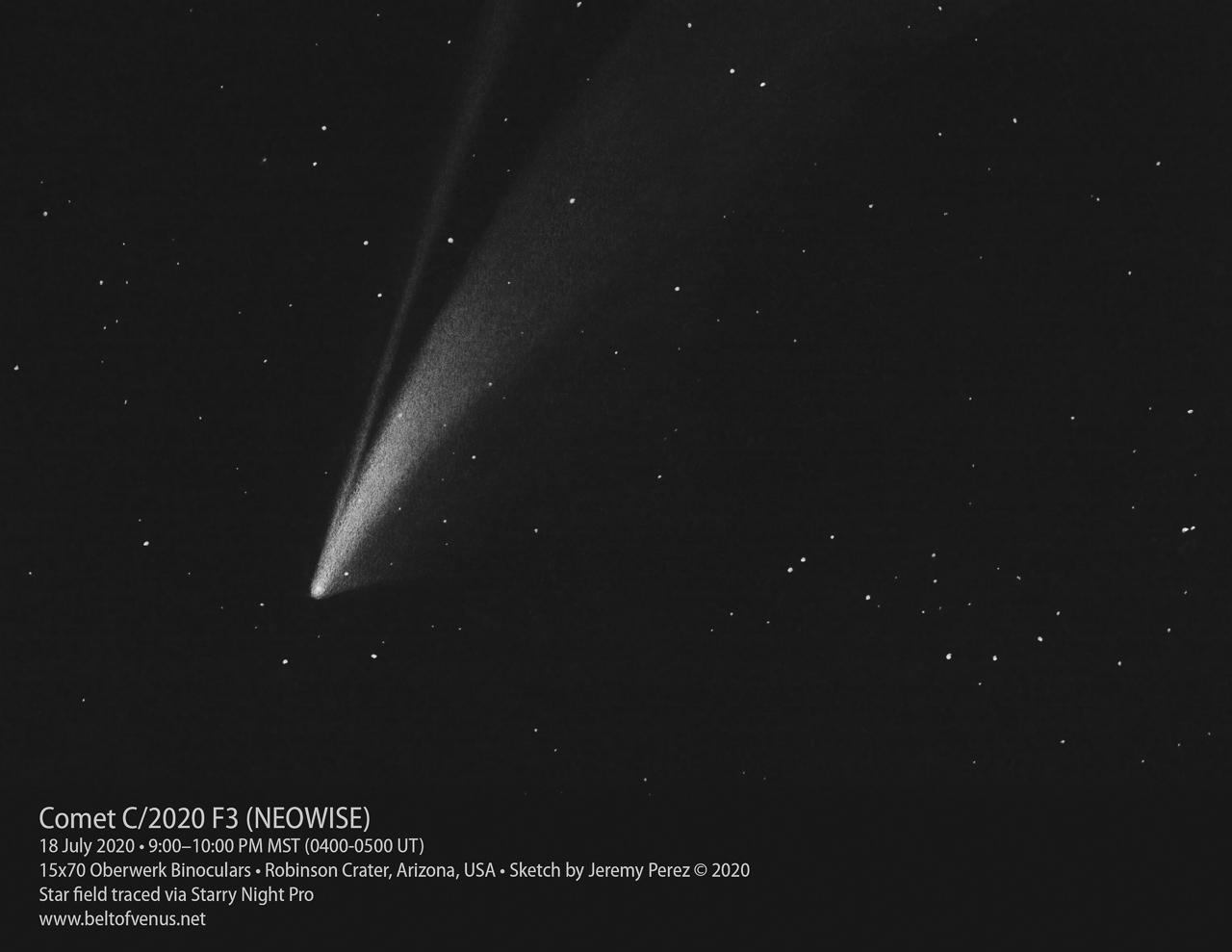Such a spectacular view. Both naked eye and through binoculars. Even though it hasn't qualified for 'great' comet status, it is large and a beautiful ornament to the night sky right now.
The sketch is a binocular view of the comet from July 18th. Compared to the naked eye view, the ion tail was very easy to spot through binoculars. The challenge for me is that the magnified view made it difficult to tell where the extent of both tails and the wider fan of the dust tail tapered off. It's just a very smooth fall-off.
The pseudonucleus was bright but soft/non-stellar. A fainter extension of the dust tail fanned away from the coma about 70 degrees to the main dust tail. The sketch shows a couple binocular fields worth of height for viewing that extent of the comet. Star field was traced via a print from Starry Night Pro so I could focus on field sketching the comet itself while running photography ops at the same time.
| Subject | C/2020 F3 (NEOWISE) |
| Classification | Comet |
| Position (J2000) | Virgo: [RA: 9 5.847 / Dec: 48° 4.510' ]* |
| Magnitude | Not estimated |
| Date/Time | 18 July 2020 - 9:00-10:00 PM MST (19 July 2020 - 0400-0500 UT) |
| Observing Loc. | Robinson Crater, Arizona |
| Instrument | 15 x 70 Oberwerk Binoculars |
| Conditions | Partly cloudy, calm |
| Seeing | Not estimated |
| Transparency | Not estimated |
| *References | Starry Night Pro |





